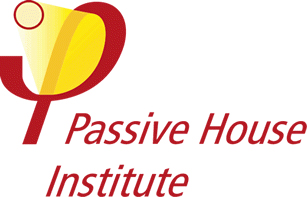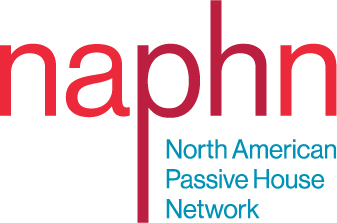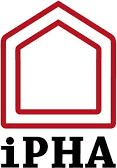The fundamentals of Passive House design and construction deliver “high performance buildings” in terms of energy efficiency, comfort, healthy indoor air quality, durability, and lower cost of maintenance. The ways in which different groups of stakeholders’ experience and benefit from those performance factors will vary based on the needs, priorities, and preferences of the stakeholders. Scroll down to learn about whether and how Passive House makes sense for you.
Same Game: Design and build on time, on budget, and with few surprises — then manage in order to maximize revenue/profit, minimize operational expenses, and maintain or enhance a positive reputation. These basics of ROI have not changed.
Evolving Priorities: Comfort and health of occupants, extreme energy efficiency, incorporation of renewables, minimizing the embodied and operational carbon, environmental responsibility, and social equity. These factors are increasingly important to the value proposition.
Clear Opportunities: Developers, owners, and operators who embrace and incorporate the evolving priorities will have a clear advantage in the marketplace of tomorrow.
A Developers Guide to Certified Multi-Family Passive House Buildings
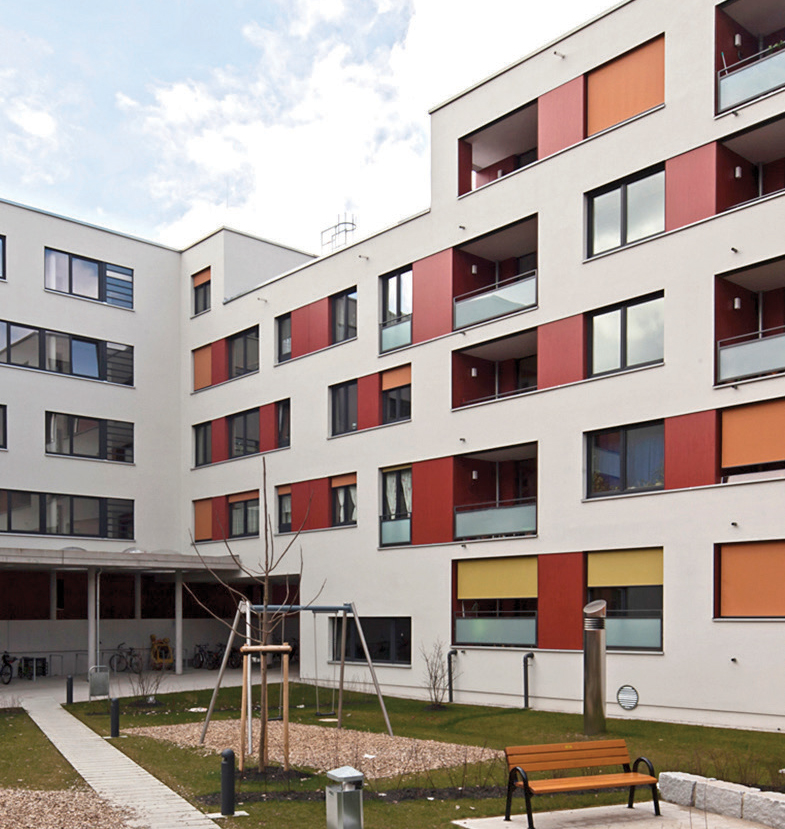 Presented by New York Passive House, an industry resource for large-scaled Passive House building, produced in cooperation with the Passive House Academy. Publication date: November 2015
Presented by New York Passive House, an industry resource for large-scaled Passive House building, produced in cooperation with the Passive House Academy. Publication date: November 2015
Evidence-Based Performance
“Increasing public expectations around the impact buildings have on occupants is causing building owners and developers to carefully consider which sustainability investments have the greatest potential to deliver the promised financial results.”
– Beth Eckenrode, Principal of Auros Group (aurosgroup.com)
“The greatest trend we see today in constructing or renovating sustainable buildings is the movement toward evidence-based performance. Today, our entire book of clients is filled with those who feel it’s no longer good enough to design for high-performance or “sustainable” buildings; they are demanding proof of performance in operations.”
– Beth Eckenrode, Principal of Auros Group (aurosgroup.com)
- Over the last several decades, sustainable design and construction has gone from prescriptive standards (do these things), to measured performance (testing and detailed modeling), to performance accountability (legislation, reach codes, ongoing measurement).
- Developers and operators are developing “Owners Project Requirements” that establish specific expectations and measurement of factors such as energy use intensity (EUI), airtightness (ACH), indoor air quality (CO2, PM, Humidity, VOCs, etc.), fresh air exchange rate, and many more — early in the planning process.
- Two keys that enable cost-effective delivery of the performance specified in the owner’s project requirements are: Moving the design, modeling, and budgeting to much earlier in the planning process, and having access to detailed and comprehensive modeling that accurately predicts the operational performance of the building or buildings — throughout the design and construction process these two elements facilitate informed choices based on first cost, recurring costs, and impact on performance.
The Effort Curve:
Patrick MacLeamy of HOK describes the Effort Curve in this 3-minute video.
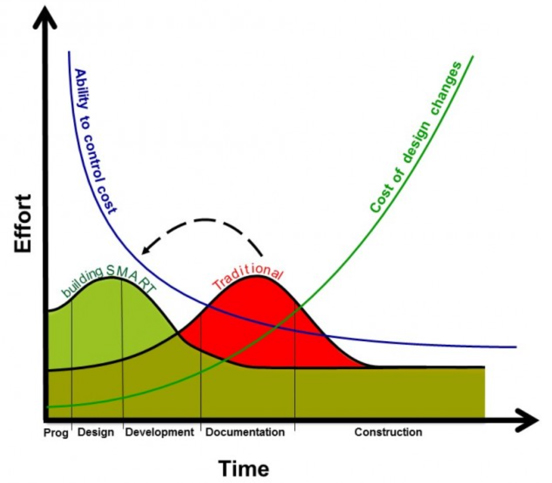
- Moving the detailed design, modeling and budgeting to early in the planning process does not appreciably increase the overall effort but does make it possible to optimize the building’s expected performance, based on owner’s project requirements, during the time when the ability to control costs is high and the cost of changes is low. This is the first step toward achieving evidence-based performance.
Detailed Modeling with PHPP
- The Passive House Planning Package (PHPP) is an extremely comprehensive and accurate modeling program that accurately predicts actual performance
- Regardless of the owner’s project requirements, and/or which protocols or performance measures you choose to employ (Passive House or others), using the Passive House Planning Package (PHPP) will provide the detailed analysis needed to design and deliver on those requirements and performance measures.
Environmental Responsibility:
Developers, owners, and those who manage operations who embrace Passive House design and construction are joining a movement that provides an epic win/win/win scenario.
- It is a personal win for everyone involved because it touches every level of Maslow’s Hierarchy of Needs from basic requirements to self-actualization
- It is a win for everyone who lives or works within Passive House buildings — comfort, health, and peace of mind
- It is a critical part of, not only a win, but a stop and reversal of losses, for the planet and all of our fellow occupants
New York Passive House
“Please consider joining NYPH as a Member or Sponsor — or registering for upcoming training to become a CPHD/C or Tradesperson — or contact us with any questions or requests at info@nypassivehouse.org”























